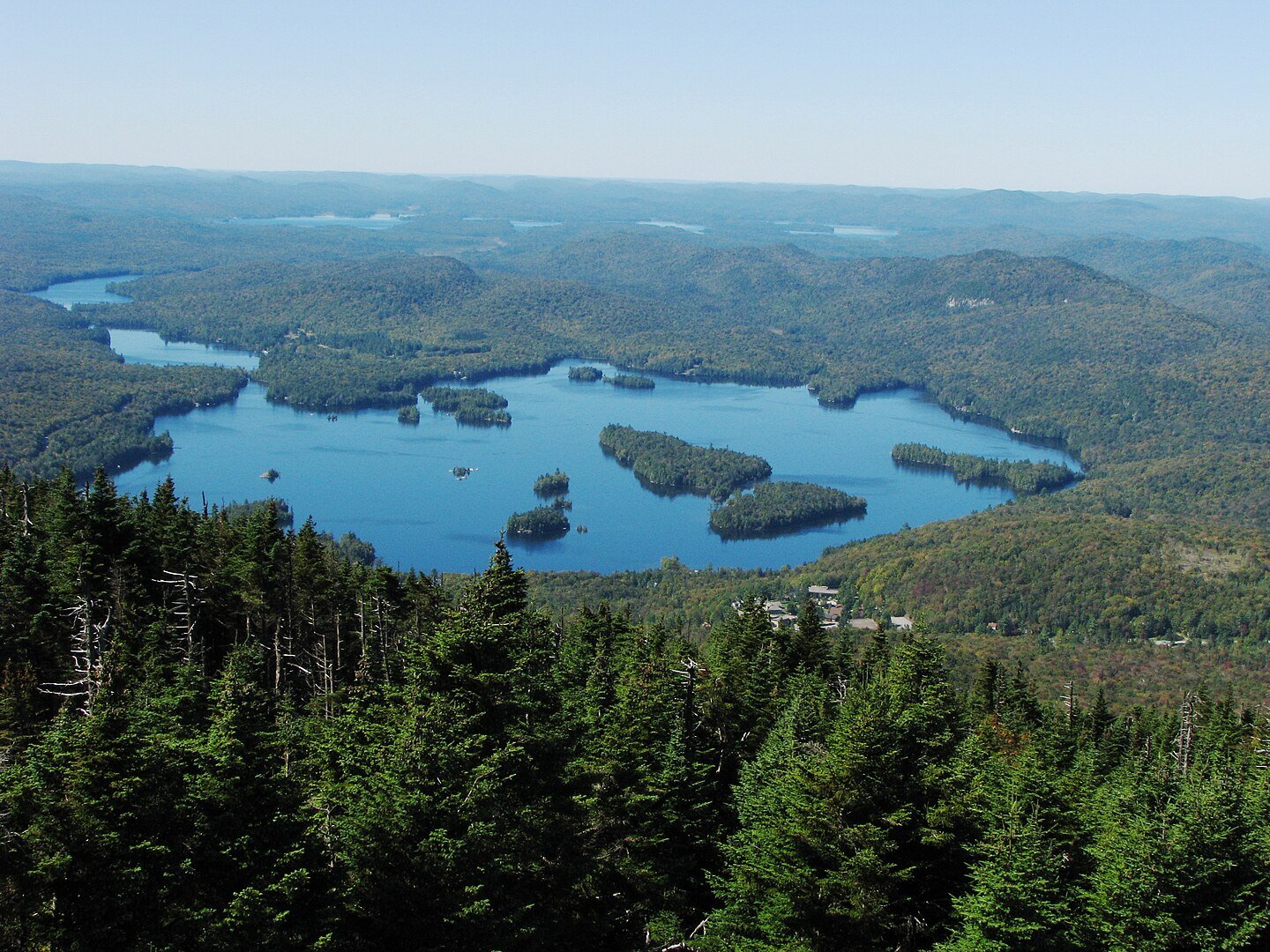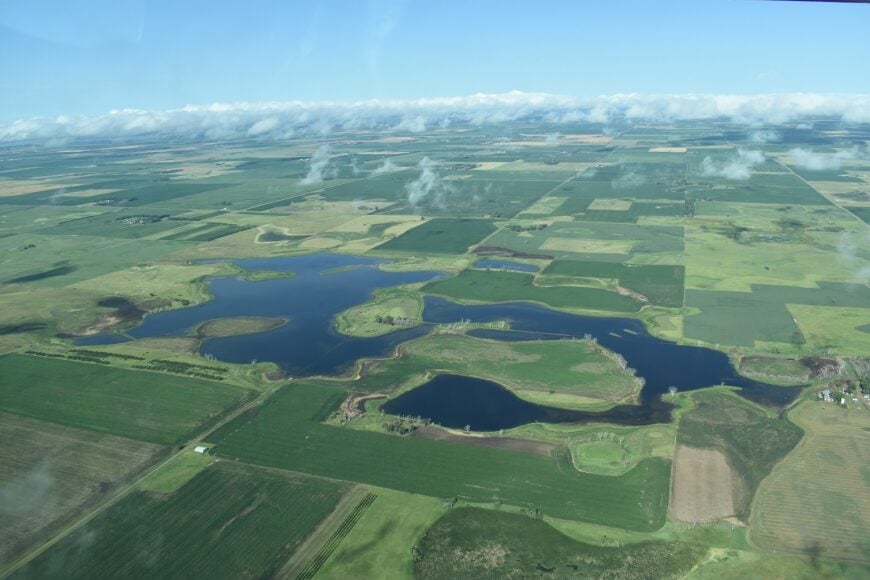
Northern South Dakota is a land where silence stretches wider than the horizon. Towns here appear almost unexpectedly—clusters of homes, grain bins, and cafés tucked into an ocean of prairie that seems endless. For those seeking distance from highways and the blur of modern life, these communities offer a kind of stillness that is increasingly rare.
The region’s identity rests in its open skies and working landscapes. Wheat fields and cattle pastures form the backbone of daily life, while the Missouri River and scattered lakes bring moments of calm—fishing at dawn, watching pelicans wheel over the water, or walking along a quiet main street where time slows to the rhythm of the land.
History lingers strongly in this part of the state. German-Russian churches rise with onion domes against the plains, ghostly coal towns fade into the grass, and monuments to Lakota leaders keep memory alive. Each place carries its own story, rooted in resilience and tradition, shaped by both community and isolation.
What unites these towns is their sense of pause—a reminder that seclusion can be a strength. From borderland hamlets like Herreid to riverfront refuges such as Pollock, Northern South Dakota holds spaces where the land sets the pace, and where life unfolds with quiet clarity beneath the vast prairie sky.
25. Herreid’s Borderland Serenity
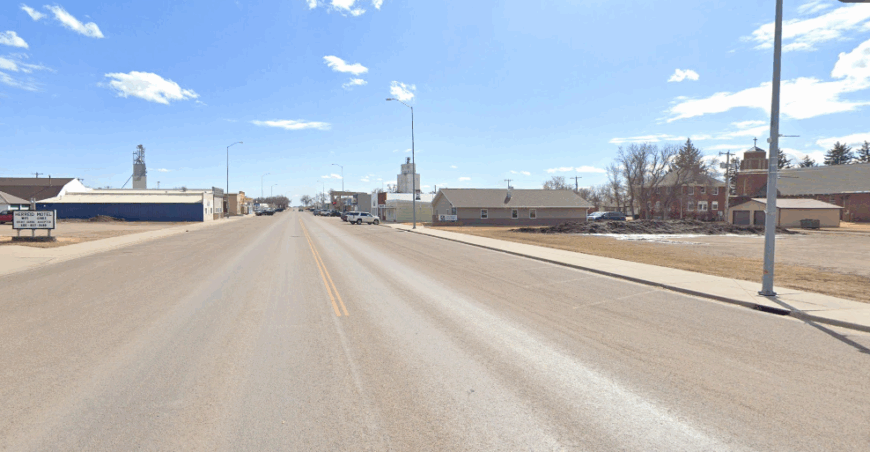
Tucked in the far reaches of northern South Dakota near the North Dakota border, Herreid feels like a place the modern world forgot. With prairie stretching endlessly and no major highways nearby, its calm isolation is defined by wide horizons and wind-whispered silence.
The town moves at a slow, rural rhythm—grain bins creak in the breeze while old brick storefronts stand watch over timeworn streets. Days drift by between fishing on the Missouri River, spotting migratory birds at nearby refuges, and grabbing pie at the kind of café where everyone greets you by name.
Farming remains the heartbeat here, with wheat, corn, and cattle sustaining generations. It’s the kind of place where you suddenly realize how long it’s been since you were in a rush.
Where is Herreid?
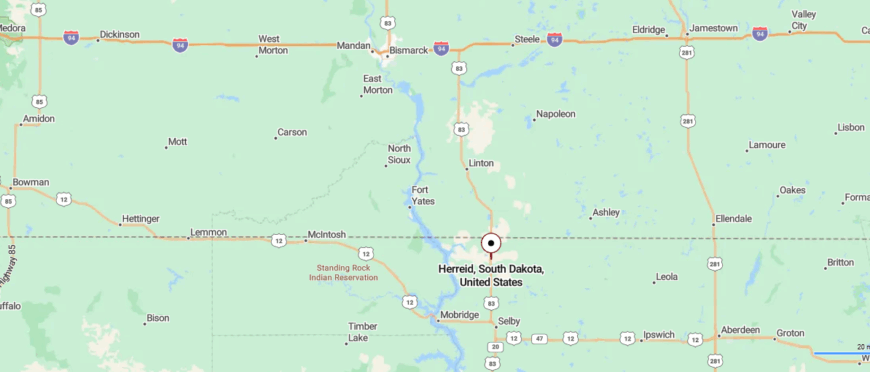
Herreid sits in northern Campbell County, South Dakota, just a few miles below the North Dakota line. It rests along U.S. Route 83, where open prairie stretches toward the distant Canadian border.
Travelers reach it by driving long, quiet miles through ranchland until a tidy grid of streets and farmsteads appears. Even on arrival, the silence feels wide and welcoming—as though the land has been waiting.
24. Timber Lake’s Vast Prairie Seclusion
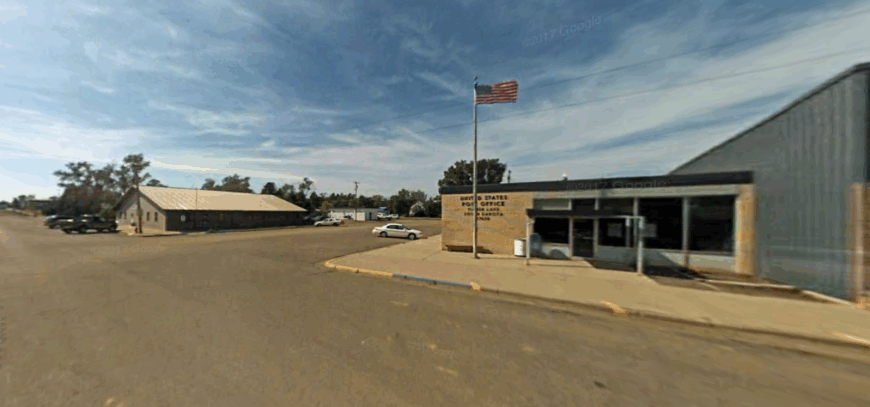
Way out on a lonely stretch of prairie, Timber Lake rests far from the glow of fast-moving traffic and city lights. Its remoteness feels almost deliberate — just endless grassland, wind, and sky for company.
This is a town where time wanders slowly, where pickup trucks gather outside the café and conversations drift unhurried from porch to porch. Locals pass the days reeling in fish from the namesake lake, browsing old ranch tools at the Dakota museum, or counting storm clouds rumbling in the distance.
Livestock and crops still provide the heartbeat of the economy, tethering daily life to the land itself. It’s the kind of place you leave with dirt on your boots and peace in your chest.
Where is Timber Lake?

Timber Lake sits in the heart of Dewey County, South Dakota, surrounded by wide-open prairie on the Cheyenne River Reservation. It lies roughly 80 miles north of Pierre along US-212, far from any major hub.
You reach it by crossing miles of rolling grassland and grazing country until a small courthouse and scattering of streets rise into view. Even once you arrive, the sky seems to stretch forever, making the town feel quietly suspended in open space.
23. Mobridge’s Riverfront Retreat
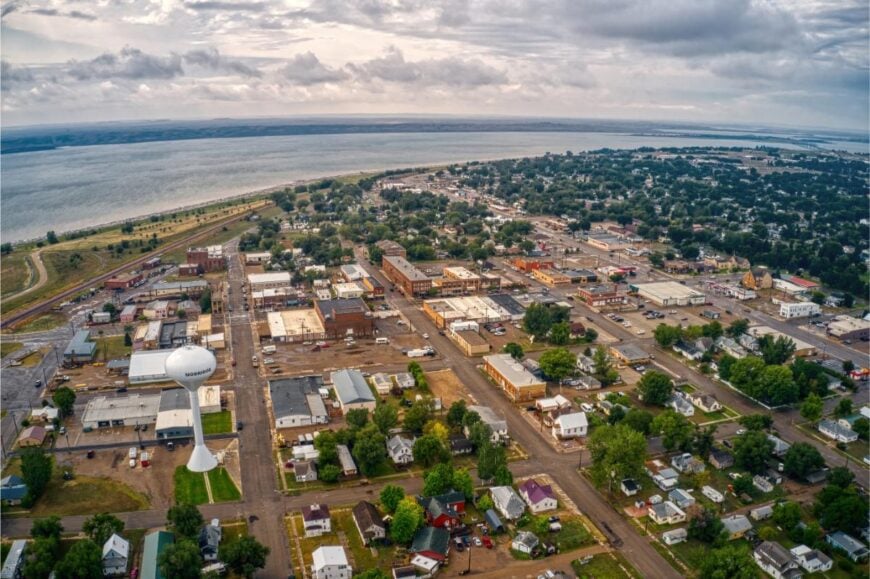
Perched along a sweeping bend of the Missouri River, Mobridge feels pleasantly tucked away from South Dakota’s faster-paced hubs. Its sense of seclusion comes not from distance alone, but from water, wind, and a horizon that seems to go on forever.
The town blends river-town grit with quiet charm—boats bob at the marina, and murals brighten century-old brick buildings downtown. Weekends mean casting for walleye, strolling the Sitting Bull Monument, or sipping coffee while watching barges ease by.
Fishing and tourism steady the local economy, shaped by the rhythms of the river. It’s the kind of place where life drifts by like the current—steady, unhurried, and deeply rooted.
Where is Mobridge?
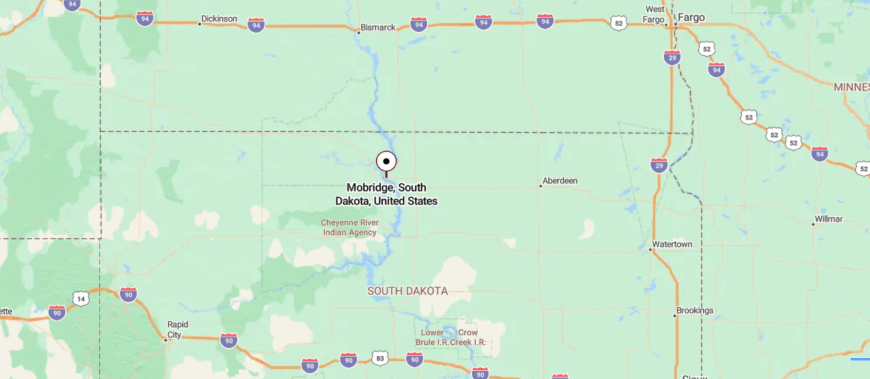
Mobridge rests along the eastern shore of Lake Oahe, anchored in Walworth County, South Dakota. It lies roughly 108 miles north-northwest of Pierre, reached by driving across sweeping prairie until the Missouri River opens into the lake and the town’s tidy streets ribbon in.
Crossings along US-12 and SD-20 bring you gently into place, where the Sitting Bull Memorial, river views, and a hush shaped by sky and water quietly greet you. Once you step onto its soil, the vastness of land and lake make Mobridge feel like a pause in a living prairie story.
22. Eureka’s Gentle Prairie Lifestyle
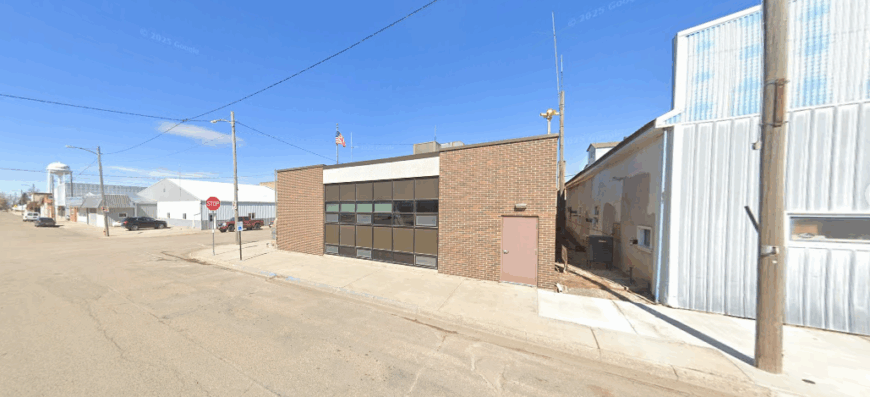
Tucked into the far northern prairie near the North Dakota border, Eureka sits quietly among endless wheat fields and sunflower rows. Seclusion comes naturally here—reached only by long gravel roads and surrounded by open countryside that feels untouched by hurry.
Its roots run deep in German-Russian traditions, visible in onion-domed churches, iron crosses in old cemeteries, and folk festivals that echo with accordion music. Weekends might mean wandering the Pioneer Museum, casting a line in Lake Eureka, or tapping your foot at a lively polka dance.
Work follows the rhythm of the land—grain harvests, cattle chores, and sunflower seasons shaping life across generations. It’s the kind of place where the sky feels bigger, the past feels close, and there’s always time for a handshake on the sidewalk.
Where is Eureka?
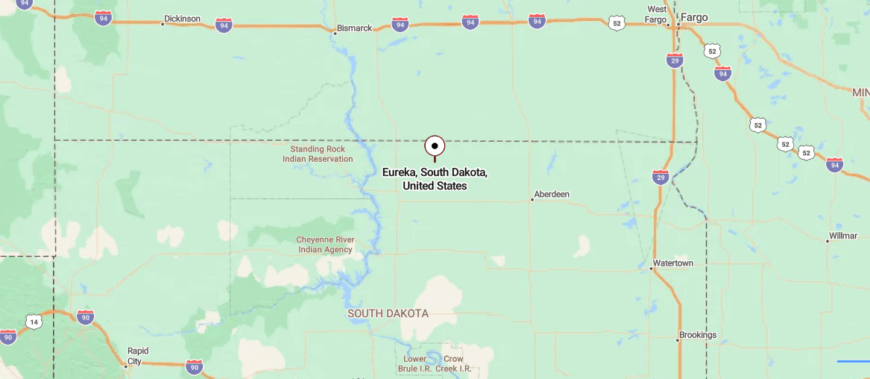
Eureka sits in McPherson County, South Dakota, just below the North Dakota border where prairie land rolls wide beneath an open sky. It lies a little over an hour west of Aberdeen, centered around a small lake and tidy grid of hometown streets.
You reach it by driving through long stretches of farmland and grain fields until the town rises gently on the horizon. When you arrive, the quiet lake, open space, and slow pace make it feel like the prairie’s heart has paused to rest.
21. Isabel’s Windswept Prairie Calm
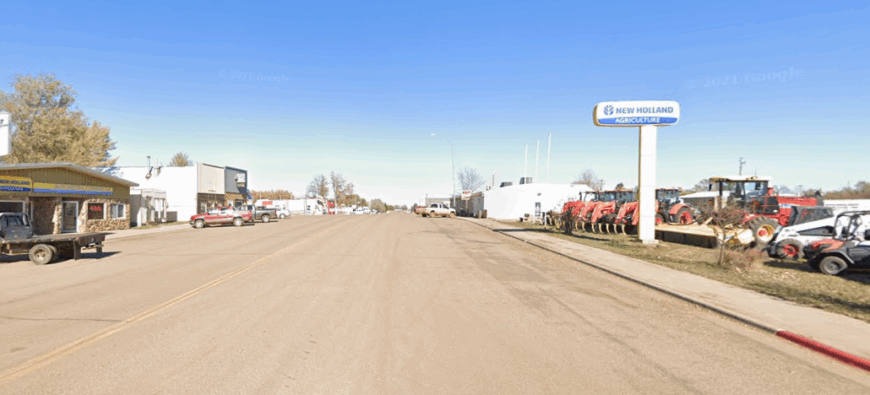
Set far from the nearest city lights, Isabel rests quietly on the vast prairie of northwestern South Dakota where the grasslands seem to stretch without end. Its seclusion lies in the long, empty roads that lead into town and the wide-open sky that makes everything feel distant yet deeply grounded.
Life unfolds slowly here—pickup trucks gather outside the café at dawn, and the breeze carries only the sound of meadowlarks and wind through fence posts. Locals find simple pleasures in rodeos, fishing in nearby dams, and cheering on high-school games at the gym that serves as a communal heartbeat.
Livelihoods depend on cattle, horses, and seasonal work tied to the ever-changing prairie. It’s the kind of place where strangers become familiar faces by nightfall—and where quiet somehow feels complete.
Where is Isabel?

Isabel sits in western South Dakota’s Dewey County, surrounded by untouched prairie with the North Dakota line not far to the north. It lies far from any city, with only long stretches of highway hinting at its location between timbered draws and open rangeland.
Getting there means following US-212 across miles of wide sky before turning onto a quiet road that leads into the town’s grid of homes and grain bins. The moment you arrive, the silence and sweep of land make it feel like a place where the prairie writes the rhythm of daily life.
20. Akaska’s Lakeside Quietude

Nearly hidden on a quiet peninsula of Lake Oahe, Akaska feels more like a secret fishing outpost than a formal town. Its sense of seclusion comes from miles of gravel road and the surrounding sweep of water and wild prairie that keep it far from the rush of modern life.
Days here begin with the soft rumble of boats heading out for walleye and end with golden sunsets reflected on still water. Locals trade stories at the bait shop, cast lines off rocky points, and host tiny summer festivals that draw just enough people to feel like a crowd.
Jobs ebb and flow with tourism, guiding, and seasonal work along the reservoir’s edge. It’s the kind of place where the lake becomes your clock and peace settles in like an old friend.
Where is Akaska?
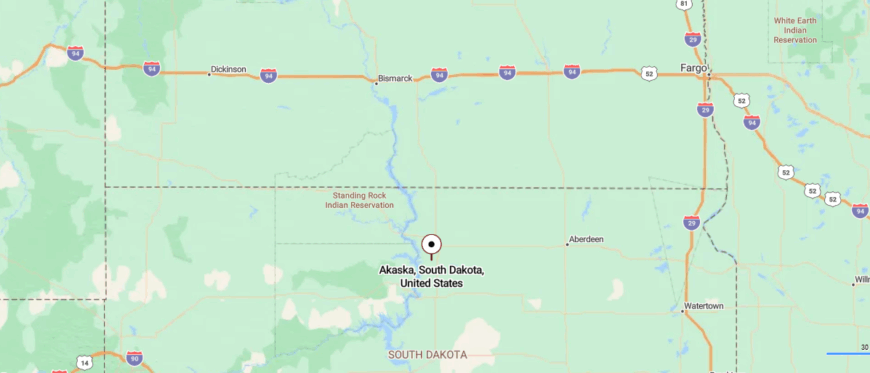
Akaska perches in northern Walworth County, South Dakota, just south of the North Dakota line. It follows U.S. Route 83 and connects via a short spur of State Route 144, emerging after miles of open prairie that gradually give way to the town’s tidy grid.
Around 80 miles north of Pierre, the drive rolls across vast grasslands until a cluster of homes and quiet streets—like a small jewel lying in the wide landscape—comes into view. The moment you arrive, the silence and sparse feel of the place make it seem as though it’s been quietly waiting all along.
19. Firesteel’s Remote Rural Outpost
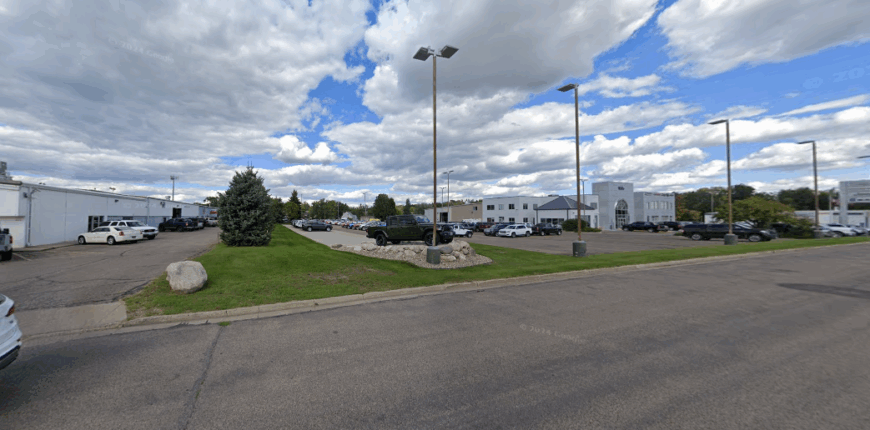
Tucked along a lonely stretch of prairie near the banks of the Grand River, Firesteel feels like a whisper from South Dakota’s past. Its seclusion stems from long-forgotten roads and the ghostly remains of a once-bustling mining town now reclaimed by grass and wind.
Broken foundations and weathered headframes hint at coal seams that once brought life and noise to these quiet hills. Today, visitors roam the remnants, fish in nearby stock dams, or hunt pheasants that dart through tall wheatgrass.
Any remaining livelihoods tend to follow the rhythms of ranch work and seasonal outdoor pursuits. It’s the kind of place where history fades into the landscape, leaving behind only silence and stories.
Where is Firesteel?
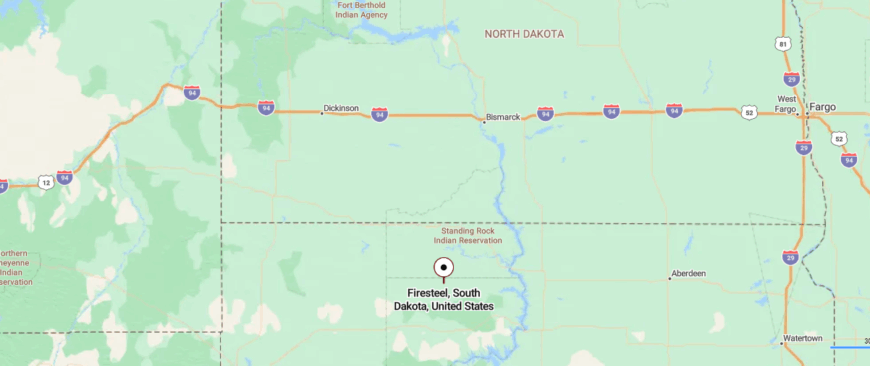
Firesteel rests in Dewey County on the Cheyenne River Indian Reservation, tucked into northern South Dakota’s open prairie. It lies a few miles west of Isabel along a quiet stretch of state road, far removed from any highway hub.
You arrive by winding through wide ranching land and scrub grass until the ghostly remnants of coal-era buildings emerge on the horizon. Arriving here, the wind through the empty streets and the old stone chapel’s quiet presence make it feel as though time paused long ago—and stayed.
18. Wakpala’s Prairie Heritage Quiet
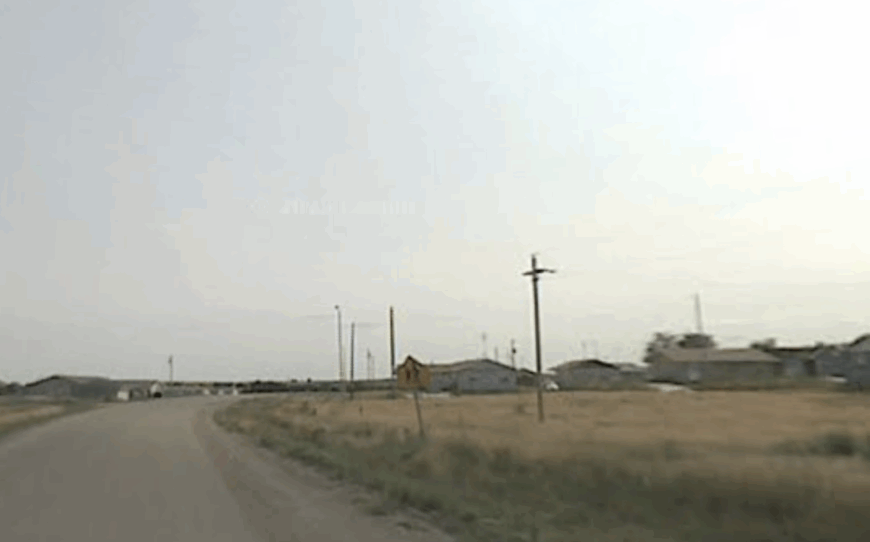
Wakpala rests along the Grand River in a sweep of land where prairie, sky, and history converge. More than just a quiet settlement, it carries deep cultural significance as the final resting place of Sitting Bull, whose grave site draws visitors seeking to connect with the story of the Lakota people. Despite that historic weight, the town itself moves gently—children playing in open fields, horses grazing on distant hills, and evenings spent with family as the sun dips across the Missouri breaks.
Life here follows the long rhythms of ranching, community, and tradition. Families tend cattle and hayfields, gather at the community center for powwows and school events, and maintain ties that stretch back generations. The landscape offers both solitude and continuity—rolling prairies where the past feels near, and where modern life remains rooted in land and culture.
What distinguishes Wakpala is its quiet resilience: a place that feels both secluded and significant, woven into the living fabric of northern South Dakota’s story.
Where is Wakpala?
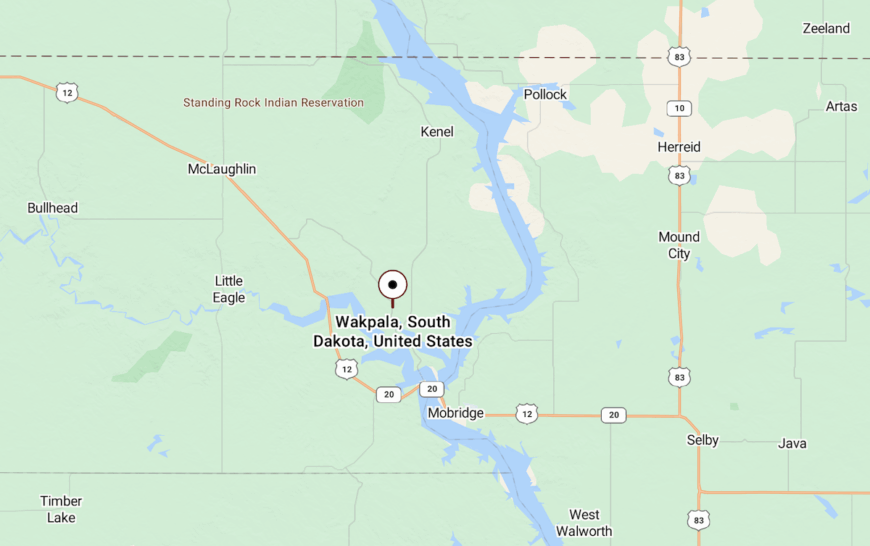
Wakpala is located in Corson County, on the Standing Rock Reservation in northern South Dakota. It lies along the Grand River, just east of U.S. Highway 83 and about 14 miles north of Mobridge.
Reaching it means following long, two-lane roads across the Missouri Plateau until the river valley opens into a cluster of homes, a school, and the famed Sitting Bull Monument. The journey itself sets the tone—wide skies, open prairie, and a sense of entering a place shaped as much by history as by quiet.
17. Java’s Historic Prairie Stillness
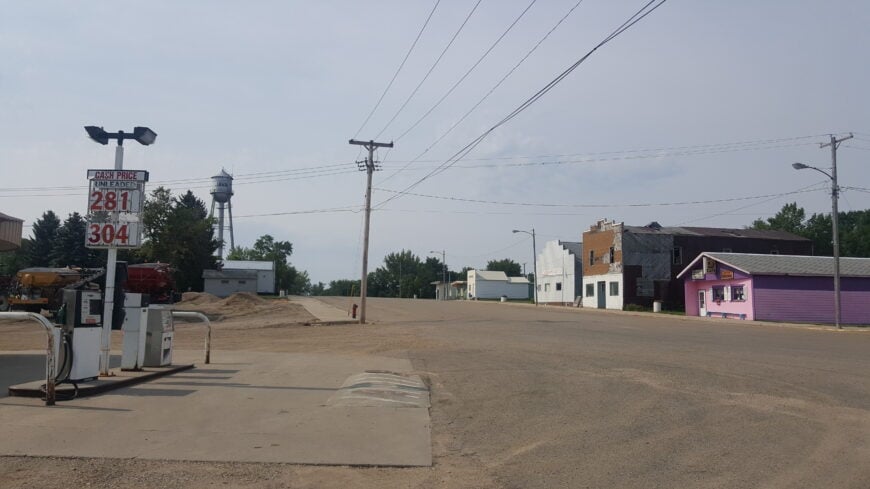
Set amid the far northern plains near the North Dakota line, Java lies quietly where endless fields meet an even wider sky. Its sense of seclusion comes from its distance to major highways and the long, empty roads that lead you there.
You can almost hear history breathing in its old brick school, onion-domed church, and faded storefronts that speak of its German-Russian roots. Locals pass the time tending backyard gardens, browsing the community museum, attending church suppers, and fishing at nearby Eureka Lake.
Most residents still work the land—raising wheat, sunflowers, and cattle on farms stretching to the horizon. It’s the kind of place where you arrive a stranger and leave feeling like someone kept a seat waiting just for you.
Where is Java?
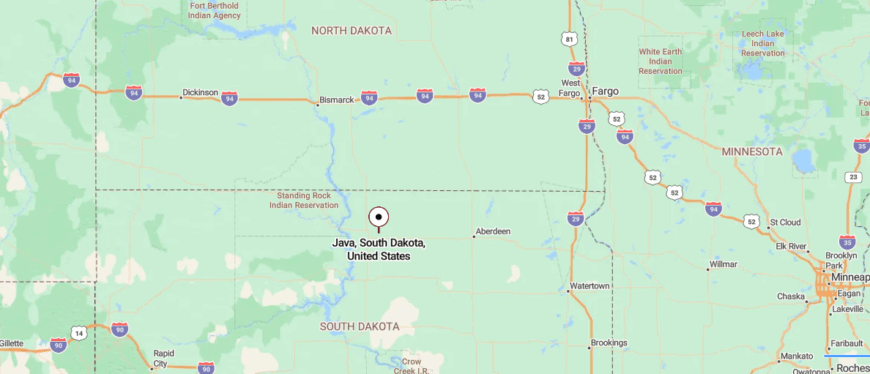
Java sits in Walworth County, South Dakota—just south of the North Dakota border and surrounded by prairie that stretches wide to meet the sky. With around 120 residents, the town occupies a compact grid born of the railroad era, named affectionately for the java coffee favored by early train crews .
Travelers reach it by crossing broad fields and long, flat horizons before arriving at its quiet cluster of homes and grain elevators along US-83. The hush that meets you here carries the warmth of small-town welcome, grounded in the land’s steady rhythm.
16. Trail City’s Remote Prairie Hamlet
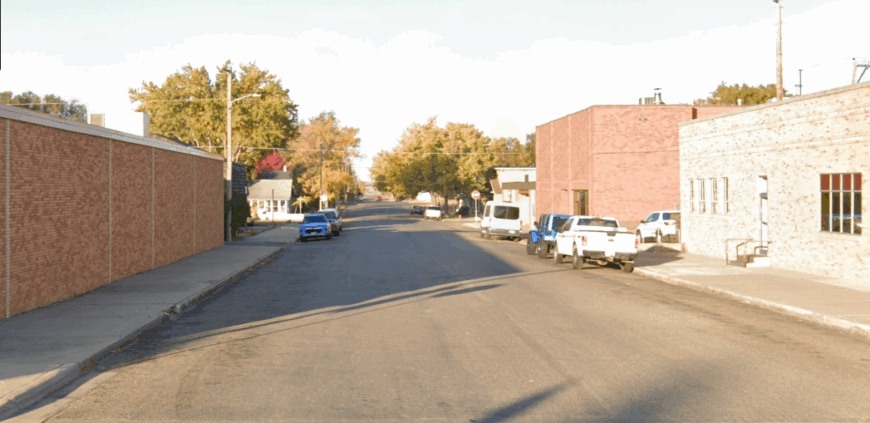
Sitting at the fork of two long gravel roads on the Standing Rock prairie, Trail City feels like a point on the map the world glances past. Its remoteness comes from vast rangeland in every direction and a population small enough to fit around a single kitchen table.
Life moves with the elements—dust devils swirl down the streets, and sunsets stretch forever across the buttes. Free time is spent fishing small stock dams, riding horses across open pasture, or gathering for laughter-filled suppers in nearby community halls.
Work centers on ranching, fence mending, and hauling feed across great distances. It’s the kind of place where the horizon is wide and worries feel wonderfully distant.
Where is Trail City?

Trail City sits quietly across the boundary of Dewey and Corson counties in northern South Dakota, crossing paths with the sweeping prairie that stretches toward the Missouri River. Nestled at the junction of old rail routes and the trails once used by Native American cattle drives, it feels shaped by the paths that met there.
You reach it by leaving the main highways behind and following rolling county roads until a cluster of ranch-style homes, a post office, and open grassland comes into view. Arriving here, the vast sky and quiet crossroads make it feel like a place held in the pause between journeys.
15. Lowry’s Prairie Tranquility

Tucked along a lonely rail line between wheat fields and grassland, Lowry feels like a forgotten dot on South Dakota’s backroads. Its seclusion is shaped by quiet two-lane roads, distant neighbors, and a landscape where the wind seems to have more to say than people do.
The town itself is just a handful of houses, an old co-op elevator, and traces of a once-busier main street. Locals occupy their time checking cattle, tending fields, swapping stories at grain hauling, and driving for miles just to attend a school game or church potluck.
Livelihoods rely on crop cycles—wheat, sunflowers, and corn that stretch to the horizon. It’s the kind of place where stillness becomes familiar and the simplest routines start to feel like tradition.
Where is Lowry?

Lowry lies in Walworth County, about 15 miles southwest of Selby in northern South Dakota. The town sits just off U.S. Highway 83, reached by quiet county roads that cross miles of farmland before narrowing into its small grid of streets.
Arriving there, you’ll find a few homes, grain bins, and open fields stretching in every direction. Its placement on the wide prairie—far from larger towns—gives Lowry a calm, tucked-away feel, as if the land itself has kept the community hidden in plain sight.
14. Bowdle’s High Plains Heritage

Rising unexpectedly from the prairie with its landmark Bavarian-style water tower, Bowdle sits far from South Dakota’s major crossroads yet carries a quirky charm all its own. Its sense of seclusion comes from miles of open country and wide skies that make the modern world feel far away.
Life unfolds at an easy rhythm—kids bike down quiet streets, the café buzzes at sunrise, and evenings often end with a game at the local ball field. Residents spend their time browsing the Bowdle Pioneer Museum, fishing nearby lakes, or gathering for summer parades that feel delightfully small-town.
Many families still work the surrounding farms, growing wheat, sunflowers, and corn just as their grandparents did. It’s the kind of place where tradition feels alive, and neighbors are far more than just familiar faces.
Where is Bowdle?
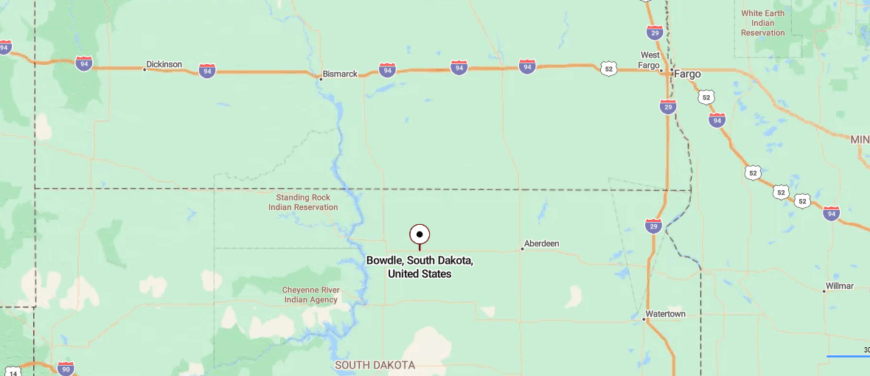
Bowdle sits in northeastern South Dakota’s Edmunds County, perched on rolling prairie that smoothly transitions into farmland under an open sky. It rests along US‑12 and SD‑47, roughly an hour’s drive west of Aberdeen and far from any urban throng.
Travelers arrive by crossing quiet fields until the town’s historic Bank of Bowdle—a stout brick building with Doric columns—signals your arrival on Main Street. By the time you step out, the calm streets and countryside make it feel like you’ve arrived in a place held gently by time and land.
13. Keldron’s Quiet Prairie Crossroads
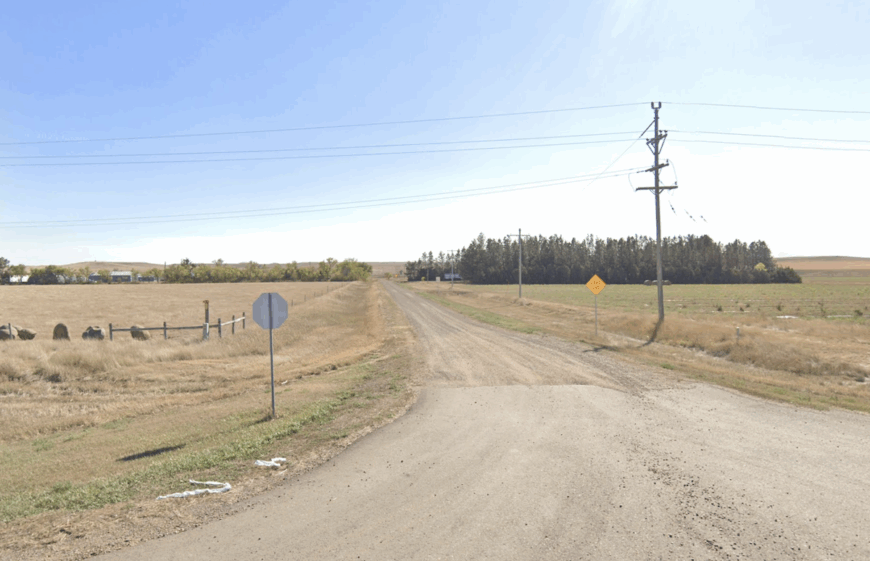
Keldron sits where the prairie opens into endless sky, a faint crossroads marked by a scattering of homes, grain bins, and a rail line that once carried cattle and crops across the Dakotas. Its size is small enough that a passing car can clear it in moments, yet the sense of space lingers long after. Here, the land dominates—shortgrass plains roll outward, broken only by fencelines and the occasional windbreak of cottonwoods.
The town’s roots lie in ranching, and that remains its heartbeat. Families move cattle across vast rangeland, mend fences under high sun, and meet neighbors at branding time or at the rare but lively church supper. Quiet defines daily life, but community endures in the rhythm of the work and the landscape itself.
What makes Keldron distinct is its sheer distance from noise. The sky seems to swallow sound, leaving only the wind, the lowing of cattle, and the crunch of gravel under tires. It’s a prairie pause, a reminder of how sparse and resilient northern South Dakota can be.
Where is Keldron?
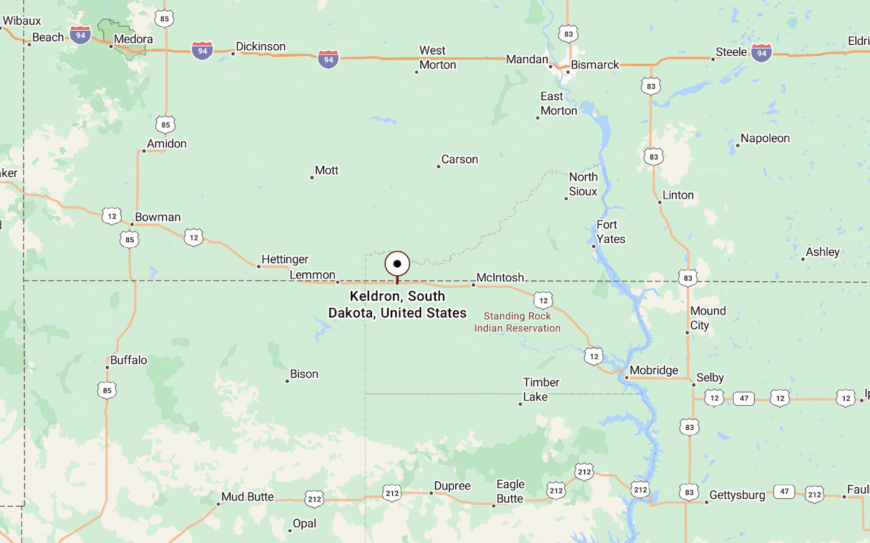
Keldron lies in Corson County, on the Standing Rock Reservation in far northwestern South Dakota. It sits along a county road west of U.S. Highway 73, with the nearest sizable towns many miles away.
Travelers reach it by driving across rangeland where horizons stretch endlessly and the road seems to run on forever. Arriving in Keldron, the isolation feels complete—this is prairie country at its most open, a settlement defined as much by what surrounds it as by what remains.
12. Lemmon’s Rugged Prairie Outpost

Perched near the North Dakota border on a vast stretch of shortgrass prairie, Lemmon is a place where isolation feels almost cinematic. Its remoteness comes from being hours from major cities, surrounded by open ranchland and skies so big they seem to swallow the horizon.
The town is known for its quirky blend of frontier history and creativity—weathered storefronts sit alongside the famous Petrified Wood Park, a folk-art landmark built from stone and tree fossils. Locals fill their days riding fence lines, browsing Western memorabilia at the museum, and gathering for rodeos that bring the prairie to life.
Ranching remains the backbone of daily work, with cattle and horses shaping the rhythm of life. It’s the kind of place where you can hear your own footsteps—and where solitude feels like something to treasure.
Where is Lemmon?
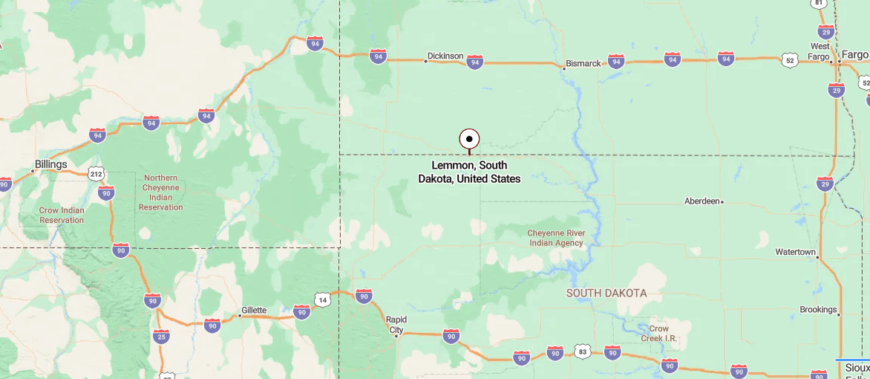
Lemmon perches in the far northwestern corner of Perkins County, South Dakota—just a stone’s throw from the North Dakota line. Lined along U.S. Route 12, it sits amid sweeping prairie that unfolds all the way to the horizon.
You arrive by crossing wide grasslands and ranch country, and you’ll know you’ve reached Lemmon when the odd towers of petrified wood and the tidy grid of a small town appear under the vast sky. Even as you step in, the silence and wide-open air feel as if the land itself is holding space—quiet, open, and unhurried.
11. McLaughlin’s Windswept Prairie Haven
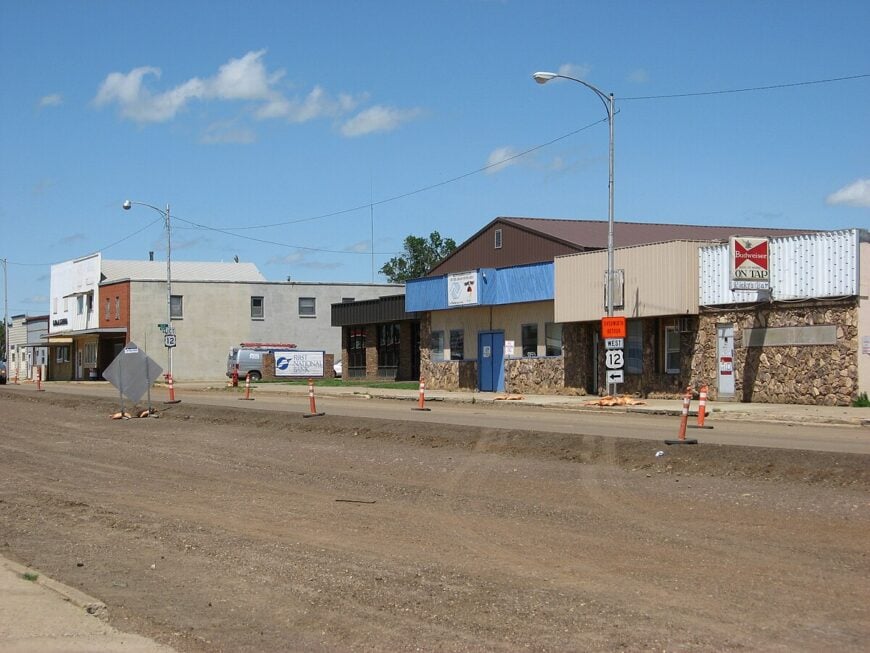
Far from the hum of interstates and chain-store sprawl, McLaughlin sits quietly on the wide-open plains of the Standing Rock Reservation. Its solitude comes from the sheer sweep of prairie, where roads stretch endlessly and horizon and sky blur together.
Daily life is unhurried—children race along dusty streets, murals brighten old brick walls, and elders share laughter on shaded porches. Weekends often revolve around powwows that echo with drums, fishing trips to nearby stock dams, and bird hunts through knee-high grasses.
Most work is tied to ranching or tribal services, rooted deeply in both land and culture. It’s the kind of place where history doesn’t feel distant—it feels woven into every breeze.
Where is McLaughlin?
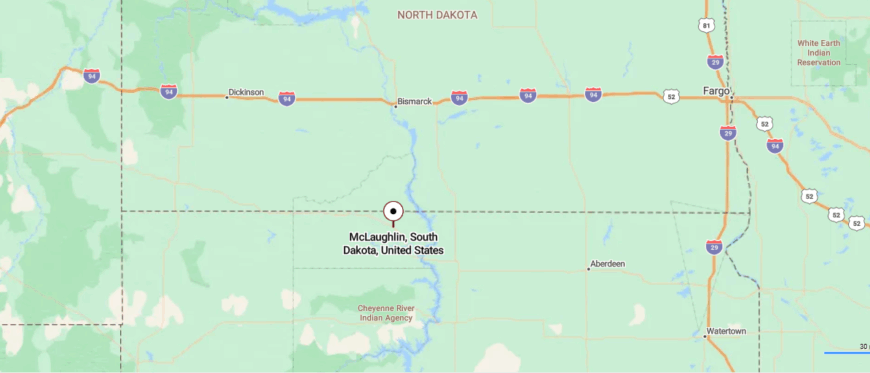
McLaughlin sits in northeastern Corson County, South Dakota, nestled just south of the North Dakota border within the southern edge of the Standing Rock Sioux Reservation. It rests along U.S. Highway 12 and SD‑63, where open prairie gradually gives way to the tidy grid of a town—home to just over 560 people, making it the largest community on this part of the reservation.
Getting there means driving long stretches of flat land under vast skies until modest storefronts and the courthouse emerge quietly into view. The calm feels rooted and enduring, as though the place itself holds stories whispered in the wind.
10. McIntosh’s Remote Rural Escape
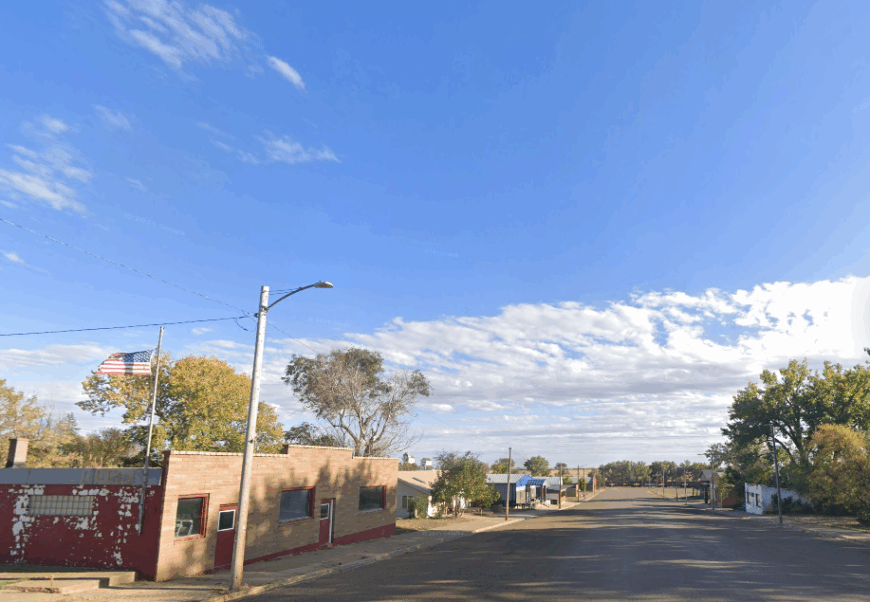
McIntosh, with a population of around 170 residents, is the epitome of small-town tranquility. I love its quiet streets and tight-knit community, where everyone knows each other, and there’s a strong sense of belonging.
The town doesn’t have the bustle of tourist attractions, but its simplicity is its charm. Outdoor enthusiasts can enjoy hunting and fishing in the surrounding areas, and the nearby Grand River National Grassland offers opportunities for hiking and wildlife viewing.
Agriculture is the mainstay here, with ranching and farming being the predominant industries. What makes McIntosh truly secluded is its distant location from any major city.
Where is McIntosh?

Located in Corson County in the northwestern part of South Dakota, McIntosh is positioned near the North Dakota border. Its remote setting is amplified by the miles of open plains that surround it, making it a haven for those seeking solitude.
To get there, I usually take Highway 12, which connects the town to other small communities but no major urban centers. The isolation is part of McIntosh’s appeal, offering an escape from the noise and haste of city living, and a chance to embrace the quiet rhythms of rural life.
9. Long Lake’s Undisturbed Natural Beauty
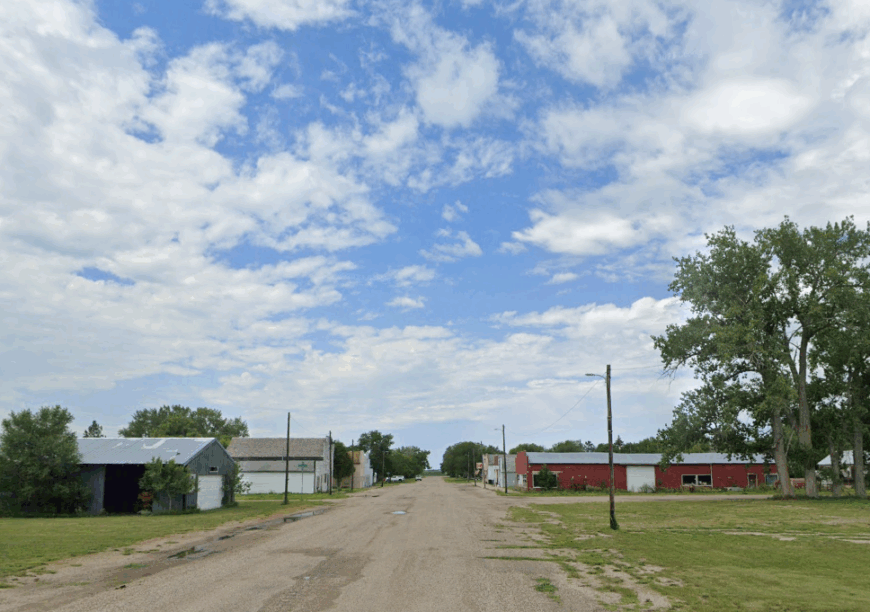
Long Lake is a small community with a population of just over 30 people, making it one of the most intimate settings I’ve ever visited. Despite its size, the town is rich in natural beauty, surrounded by wetlands and the namesake Long Lake, which is a haven for birdwatchers and nature lovers.
The area is perfect for fishing, boating, and enjoying sunsets over the tranquil waters. There aren’t many businesses here, so agriculture and small-scale farming are the primary activities. Its seclusion comes from being tucked away amidst South Dakota’s prairie pothole region, far from bustling highways and urban sprawl.
Where is Long Lake?
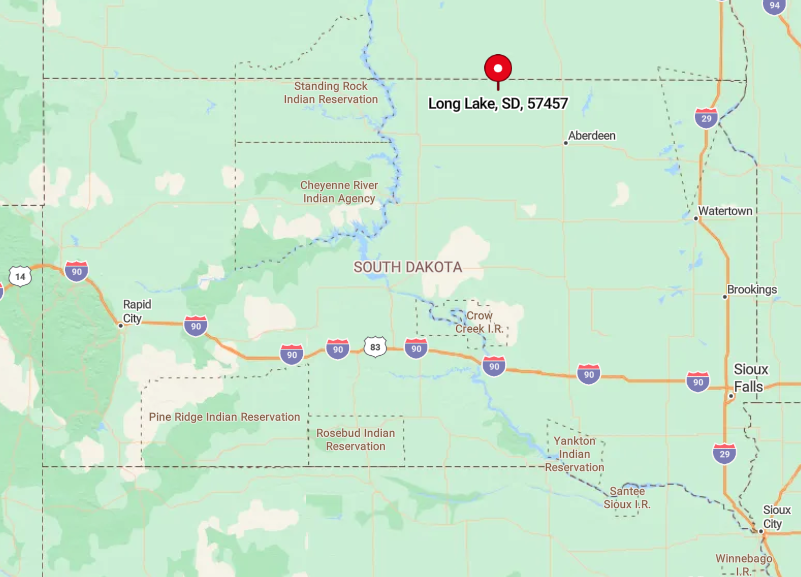
Nestled in McPherson County in northeastern South Dakota, Long Lake sits quietly off the beaten path. It’s accessible via a few county roads, but there are no major highways nearby, which I feel adds to its undisturbed atmosphere.
The town’s isolation is enhanced by the surrounding lakes and wetlands, creating natural barriers that maintain its peaceful environment. Getting there involves a scenic drive through open countryside, setting the tone for the serenity that awaits in this hidden gem.
8. Bison: Serenity in the Open Plains
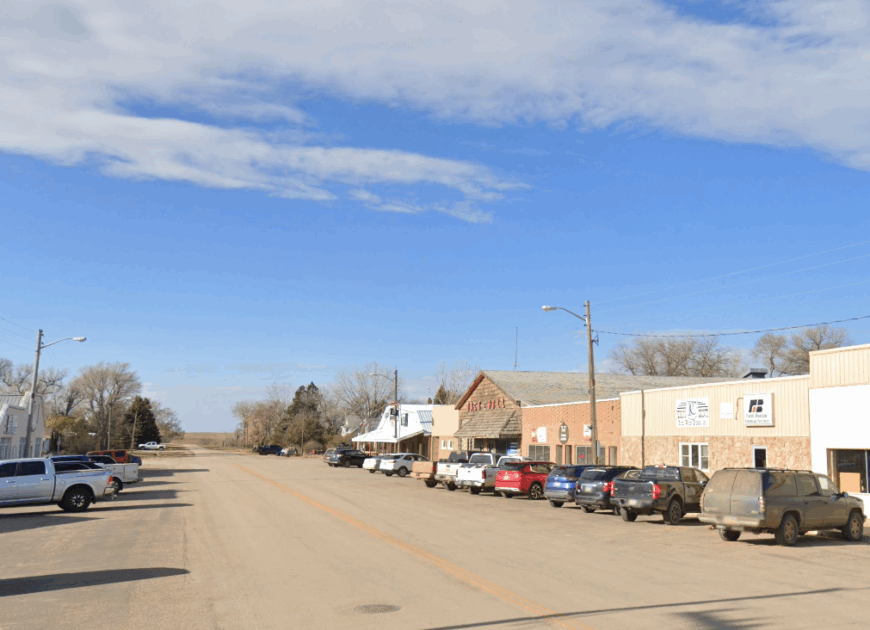
Bison, home to approximately 330 residents, offers a serene lifestyle amid the expansive open plains of South Dakota. I appreciate how the town embodies the spirit of the prairie, with its wide streets and friendly locals.
Outdoor activities include hunting, hiking, and exploring the endless horizons that seem to stretch forever. Agriculture, particularly cattle ranching, is the backbone of the local economy.
Bison’s secluded nature stems from its position far from larger towns and cities, surrounded by untouched landscapes that provide a sense of peace and freedom.
Where is Bison?
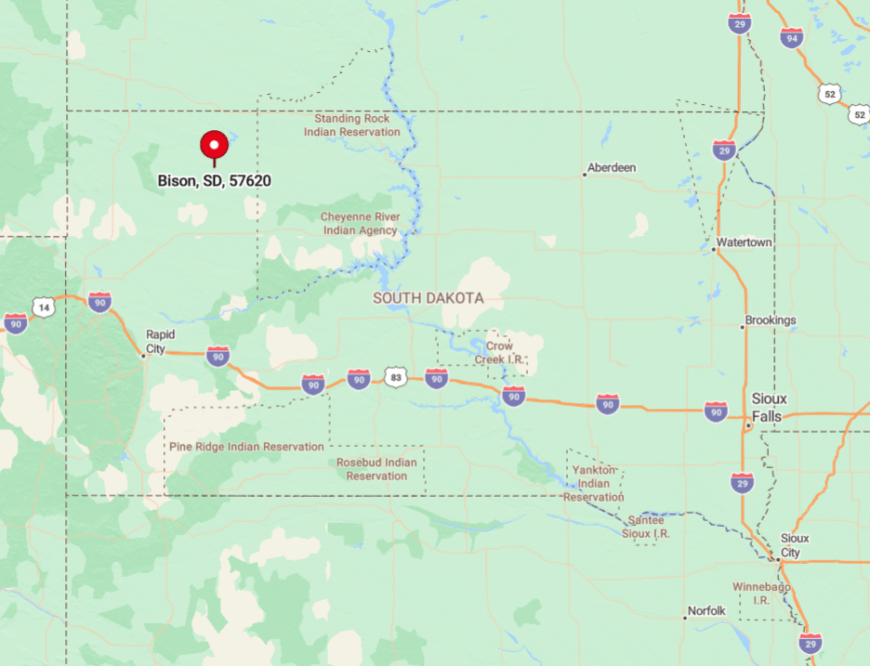
Situated in Perkins County in the northwestern part of the state, Bison is accessible via Highway 20 but remains pleasantly remote. The nearest significant urban area is hours away, which I find contributes to the town’s quiet charm.
The open plains that encircle Bison enhance its isolation, offering unbroken views of the sky and land. Traveling to Bison is a journey through some of South Dakota’s most picturesque countryside, and upon arrival, the tranquility is palpable.
7. Selby’s Peaceful Prairie Vistas
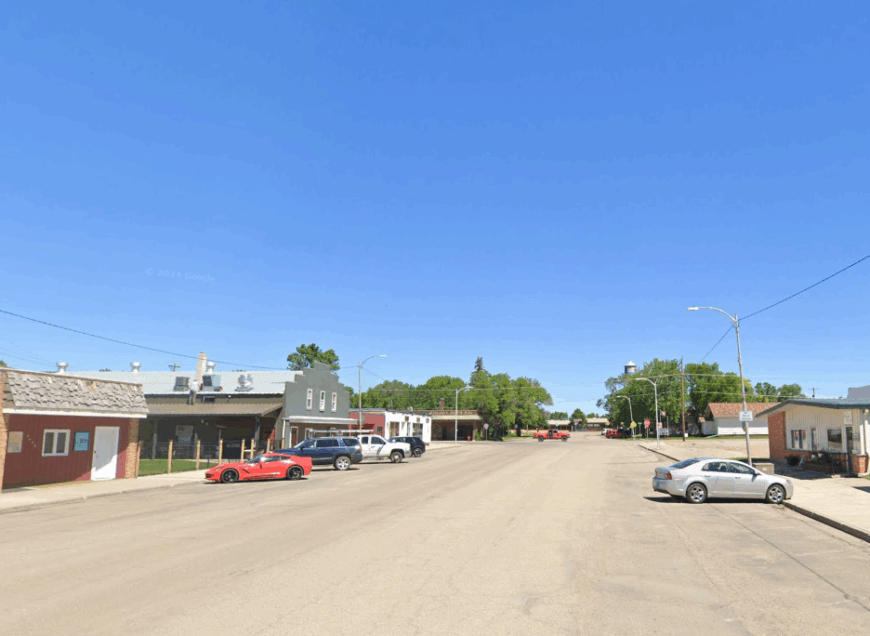
With a population of around 600, Selby offers a peaceful community nestled in the prairie of northern South Dakota. I enjoy visiting the Selby Golf Course, a nine-hole course that provides recreation amid scenic landscapes.
The town also has a rich history, showcased in the local museums and historic buildings. Agriculture dominates the economy, with wheat and corn fields stretching as far as the eye can see.
Selby’s seclusion is due to its distance from larger cities and its setting amidst expansive agricultural land, providing residents with a quiet, close-knit community atmosphere.
Where is Selby?

Selby is located in Walworth County, just east of the Missouri River. It’s accessible via Highway 83, though major urban centers are a good distance away. I find the drive to Selby calming, passing through rolling fields and open skies.
The town’s position away from busy highways ensures minimal traffic and noise, reinforcing its secluded nature. For those seeking a peaceful lifestyle connected to the land, Selby is an ideal destination.
6. The Quiet Horizons of Glenham

Glenham is a tiny town with a population hovering around 100 residents. Despite its size, it exudes a welcoming atmosphere that I find incredibly charming. The town is surrounded by vast rural landscapes, offering opportunities for peaceful walks and enjoying nature.
Agriculture is the main industry, with local farms contributing to the close community feel. Glenham’s low-density living and expansive surroundings make it a haven for those desiring solitude and simplicity.
Where is Glenham?
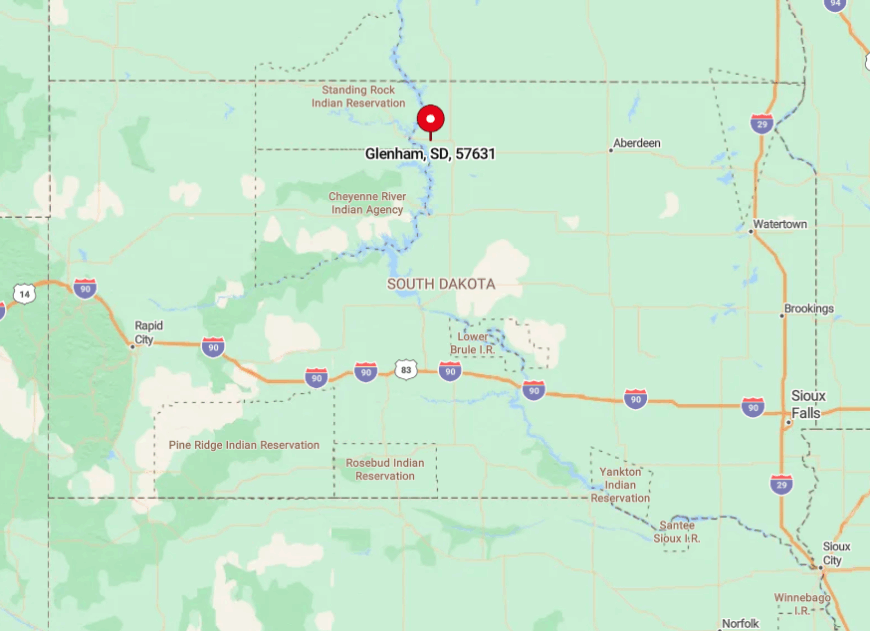
Located in Walworth County in northern South Dakota, Glenham sits just a few miles east of the Missouri River. The town is accessible via county roads, but it’s well off any major transportation routes.
This isolation means that Glenham remains untouched by the fast pace of modern life, which I see as a significant part of its appeal. Getting there involves a leisurely drive through scenic farmland, making the journey itself a serene experience.
5. Leola’s Secluded Woodland Edges
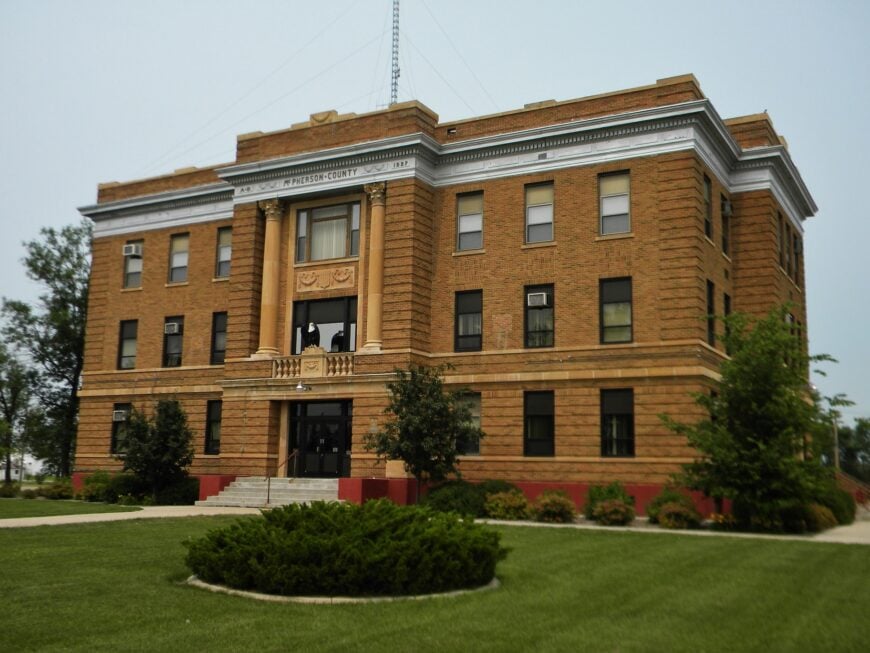
Leola, with a population of about 450 people, offers a unique blend of prairie and woodland environments. I particularly enjoy the nearby Mina Lake Recreation Area, which provides opportunities for camping, fishing, and boating.
The town itself is quiet, with local shops and a strong sense of community. Agriculture and some light manufacturing are the main industries here. Leola’s seclusion is enhanced by its proximity to forested areas, offering residents privacy and a deeper connection with nature.
Where is Leola?
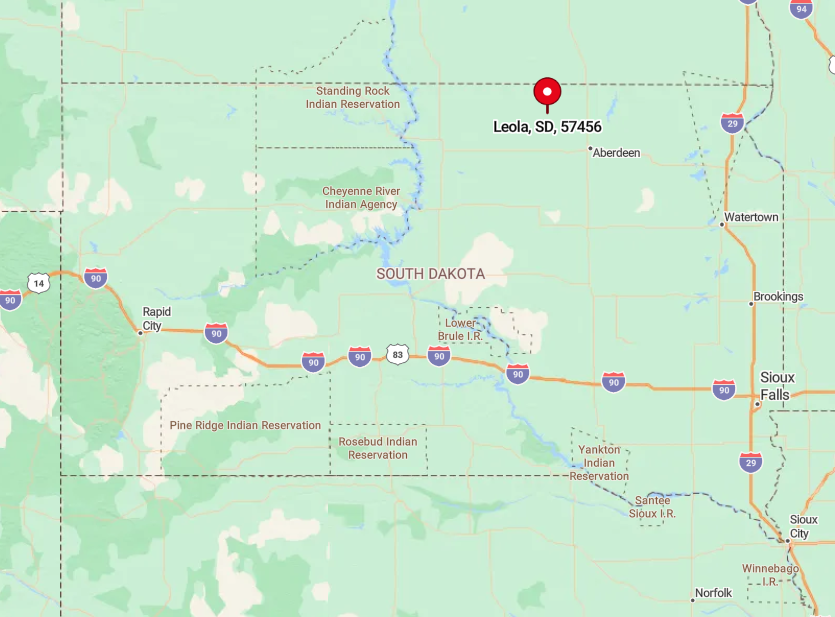
Situated in McPherson County, Leola lies in northeastern South Dakota. It’s accessed primarily through state highways that meander through rural landscapes.
The town’s location away from major urban centers and surrounded by woodlands gives it a peaceful, tucked-away feeling. I find that the journey to Leola, through both open fields and pockets of forest, reflects the town’s harmonious blend of environments.
4. Watauga’s Prairie Stillness
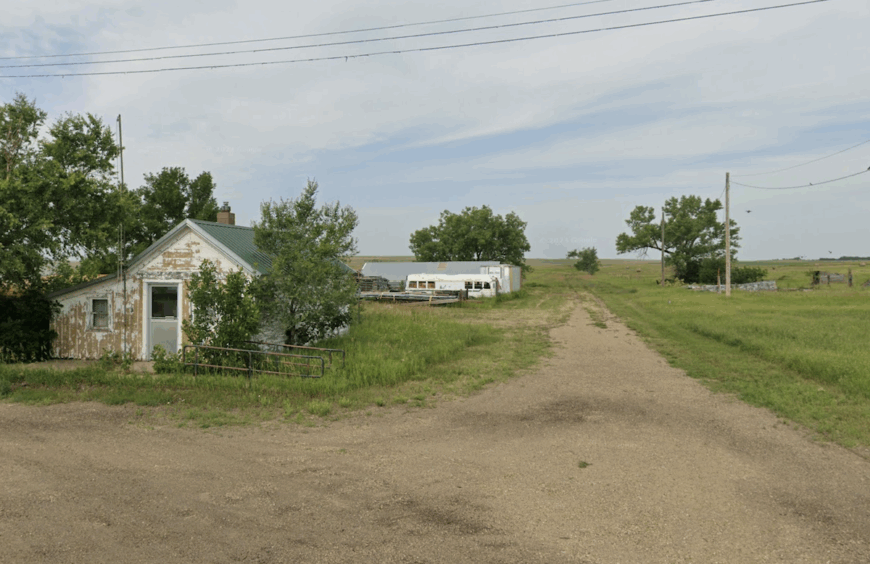
Tucked deep into Corson County’s rolling grasslands, Watauga is the kind of place you might miss if you blink, and that’s precisely its charm. With just a handful of homes scattered across the prairie, it offers a sense of solitude rare even in northern South Dakota.
Life here unfolds to the slow rhythms of ranching—checking cattle at dawn, driving long gravel stretches for supplies, and gathering with neighbors when the week allows. On the edge of wide horizons, evenings stretch into fiery sunsets that wash the town in quiet light.
Though tiny, Watauga reflects the persistence of rural life: a place where distance from highways becomes part of its identity, and where silence is a defining feature of community.
Where is Watauga?
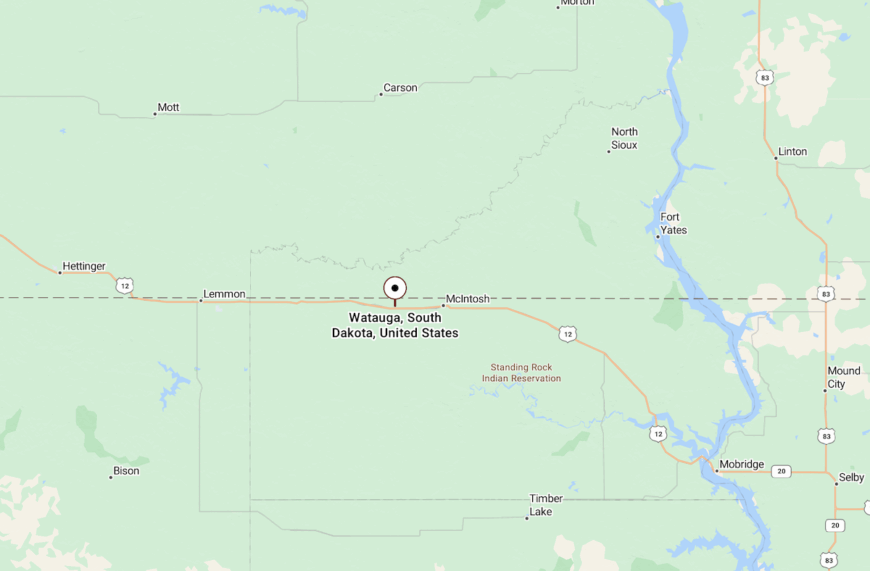
Watauga sits in Corson County, in the far northwestern part of South Dakota near the North Dakota border. It lies along SD-73, a narrow highway threading through open ranchland and prairie hills.
Travelers reach it by crossing long stretches of unbroken grassland until a small cluster of houses and grain bins comes into view. The remoteness is striking—Watauga feels more like a pause in the prairie than a town, its identity rooted in open space and stillness.
3. Roscoe: A Peaceful Retreat Amidst Rolling Hills

Roscoe is home to approximately 300 residents and is nestled amidst the rolling hills of northern South Dakota. I enjoy the town’s serene environment, with opportunities for hiking and exploring the gentle terrain.
The local community is warm and welcoming, often gathering for events at the community center or local parks. Agriculture is the main industry, with farming and ranching prevalent in the area.
Roscoe’s remote position away from larger cities offers a peaceful retreat for those looking to disconnect and enjoy the simplicity of rural life.
Where is Roscoe?

Roscoe is located in Edmunds County, accessible via Highway 12. The town’s position amidst undulating landscapes gives it a secluded feel, accentuated by the lack of nearby urban centers.
I find that the drive to Roscoe, through gently rolling hills and farmland, is both calming and scenic. Its remote location makes it an ideal spot for anyone seeking the quiet beauty of South Dakota’s countryside.
2. Hosmer’s Hidden Prairie Charm
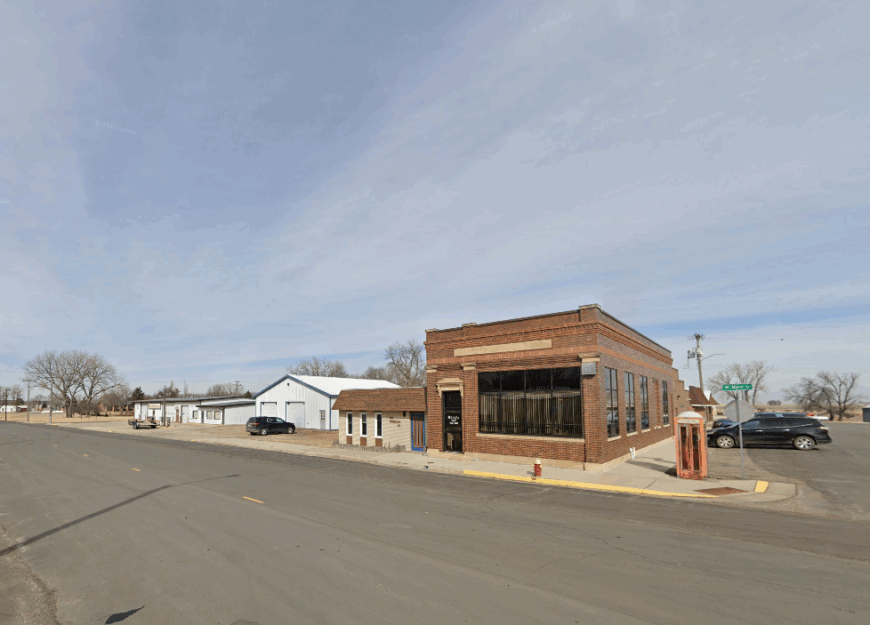
Hosmer, with a population of around 200, offers a quintessential prairie town experience. The town is surrounded by vast open fields, providing unobstructed views of the horizon that I’ve always found captivating. Local activities include community events, church gatherings, and enjoying the simplicity of rural life.
The main industries are farming and small-scale local businesses. Hosmer’s seclusion comes from its distance from urban distractions, allowing residents to immerse themselves in the tranquility of the prairie.
Where is Hosmer?

Situated in Edmunds County, Hosmer is accessible via Highway 253 but remains pleasantly isolated. The town is nestled among extensive farmlands, with the nearest larger towns miles away.
Getting to Hosmer involves a peaceful drive through sweeping fields, which I find enhances the sense of escape from city life. Its hidden charm lies in both its location and the warmth of its close-knit community.
1. The Riverside Solitude of Pollock
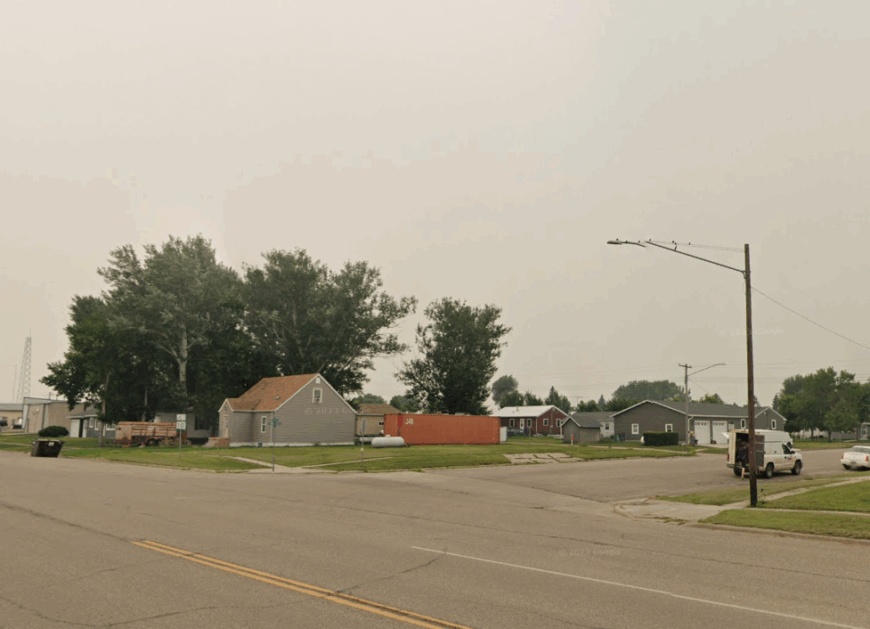
Pollock, with a population of about 230 residents, is perched along the banks of Lake Pocasse and the Missouri River. I adore the town’s serene setting, offering breathtaking views of the water and opportunities for fishing, boating, and birdwatching.
The lack of commercial development ensures that the natural beauty remains unspoiled. Agriculture is a significant part of life here, but tourism related to the lake also contributes to the local economy.
Pollock’s secluded nature is due in part to its riverside location and the surrounding landscapes that provide a peaceful and picturesque environment.
Where is Pollock?

Located in Campbell County in the northernmost part of South Dakota, Pollock is near the border with North Dakota. The town is accessible via Highway 1804, but it’s far from major urban centers, which I think adds to its tranquil atmosphere.
The journey to Pollock offers stunning views of the Missouri River and rolling hills, making the trip as enjoyable as the destination. Its riverside solitude and remoteness make Pollock a perfect escape for those seeking a harmonious blend of nature and community.




